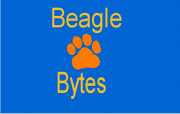Integers

Integers are whole numbers, which can be positive or negative.
Polarity
The polarity of a number says whether it is positive or negative:-
Numbers bigger than zero are positive, those less than zero are negative.
Zero itself is neutral.
A negative number is written with a minus sign in front of it.
It is good practice to put negative numbers into brackets e.g. (-6)

Examples
If you have an account at the bank and you have arranged an overdraft facility then:
![]() If you are £6 overdrawn on your account, you owe the bank £6 and therefore have less money available than if you had £12 in your account.
If you are £6 overdrawn on your account, you owe the bank £6 and therefore have less money available than if you had £12 in your account.
![]() If you are £125 overdrawn on your account, you owe the bank more money than if you were £5 overdrawn.
If you are £125 overdrawn on your account, you owe the bank more money than if you were £5 overdrawn.
![]() If you have £5 in your account, you have more money available than you would if you were £50,000 overdrawn on your account.
If you have £5 in your account, you have more money available than you would if you were £50,000 overdrawn on your account.
Addition / Subtraction
- Start at the first number
- Face the polarity of the second number
- The operator in-between numbers is important


+ means go forwards - means go backwards.
- Move the number of steps given as the second number
- Finish
Example
3 + 4 = 7
- Start at 3
- Face towards the positive
(the 4 is positive since it does not have brackets and a minus sign in front of it) - go 4 steps forwards, since the operator is +
- finish at 7
Example
3 - 4 = -1
- Start at 3
- Face towards the positive
(the 4 is positive since it does not have brackets and a minus sign in front of it) - go 4 steps backwards
- finish at -1
Example
-6 + 2 = -4
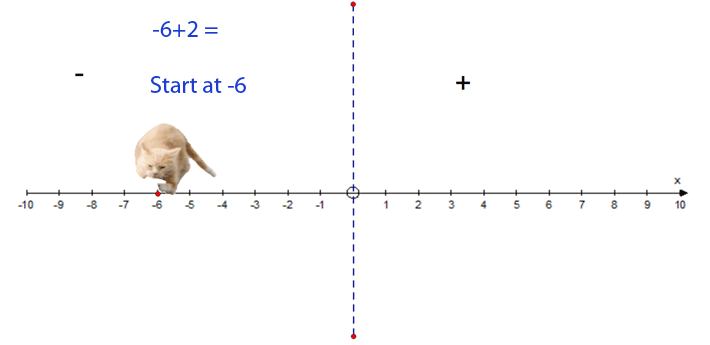
Example
-1 - 4 =( -5)

- Start at -1
- Face towards the positive
(the 4 is positive since it does not have brackets and a minus sign in front of it) - go 4 steps backwards
- finish at -5
Adding a negative number is the same as subtracting its positive counterpart.
(Using the Bank examples above, this could be likened to making a purchase with a debit card)
Examples
-5 + (-3) = -5 -3 = -8
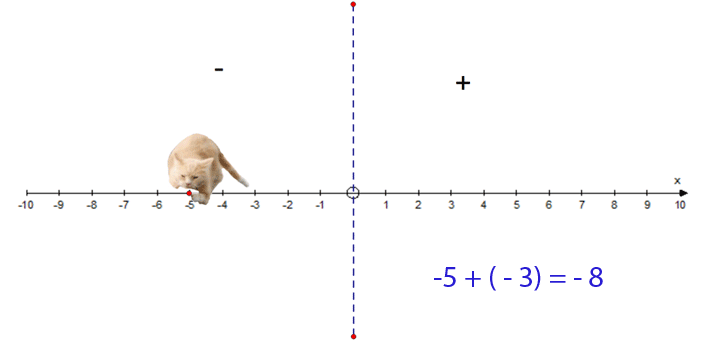
- Start at -5
- Face towards the negative since (-3) is a negative number
- go 3 steps forwards
- finish at - 8
Subtracting a negative number is the same as adding its positive counterpart.
(Using the Bank examples above, this could be likened to making a purchase with a debit card , then taking the goods back for a refund on the same account.)
Examples
-5 - (-8) = -5 +8 = 3
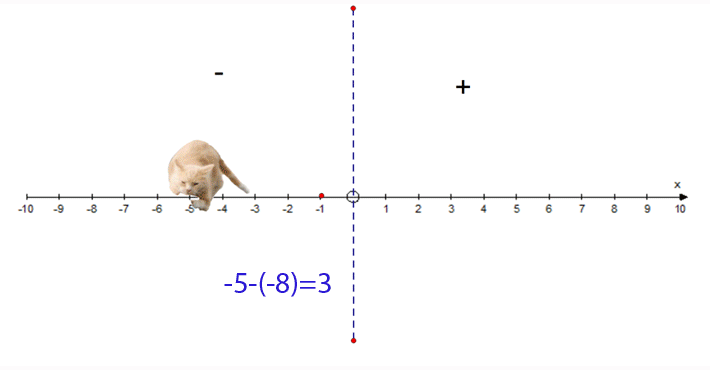
- Start at -5
- Face towards the negative since (-8) is a negative number
- go 8 steps backwards
- finish at 3
Multiplying Integers
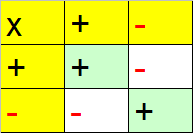
Like signs produce a positive answer.
Mixed signs produce a negative answer.
Examples
5 x 8 = 40
(-5) x (-8) = 40
(-5) x 8 = (- 40)
5 x ( - 8) = (- 40)
Dividing Integers
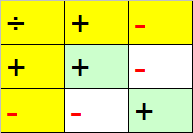
Like signs produce a positive answer.
Mixed signs produce a negative answer.
Example
40 ÷ 8 = 5
(- 40) ÷ (- 8) = 5
(- 40) ÷ 8 = (- 5)
40 ÷ (- 8) = (- 5)
